I have a mains cable buried in the wall. I would like to permanently place a small battery powered device on the wall over the cable's location and have the device be able to detect if the cable is live at any time. Direct access to the cable is not possible, it stays buried.
Local mains power is 230 V at 50 Hz. Distance from the cable to the device (drywall thickness) might be 4 inches or so, no more than that.
For safety, the device is completely disconnected from mains power (hence batteries).
I understand that an antenna designed for sensitivity at 50 Hz would have to be large. But can I get away with a small dipole antenna (perhaps a few inches long) and a fairly large amplification factor? I'm hoping to use a microcontroller to determine if the 50 Hz is present or not.
I'd need a some sort of 50 Hz band pass filter between the antenna and the amplifier.
My oscilloscope can detect the all-pervading 50 Hz hum when touching the probe with my finger. If my body picks up the mains hum, then perhaps a custom antenna might be able to as well.
Is this feasible? How might I construct a suitable antenna, and amplify it to the point where a microcontroller might detect the change?
